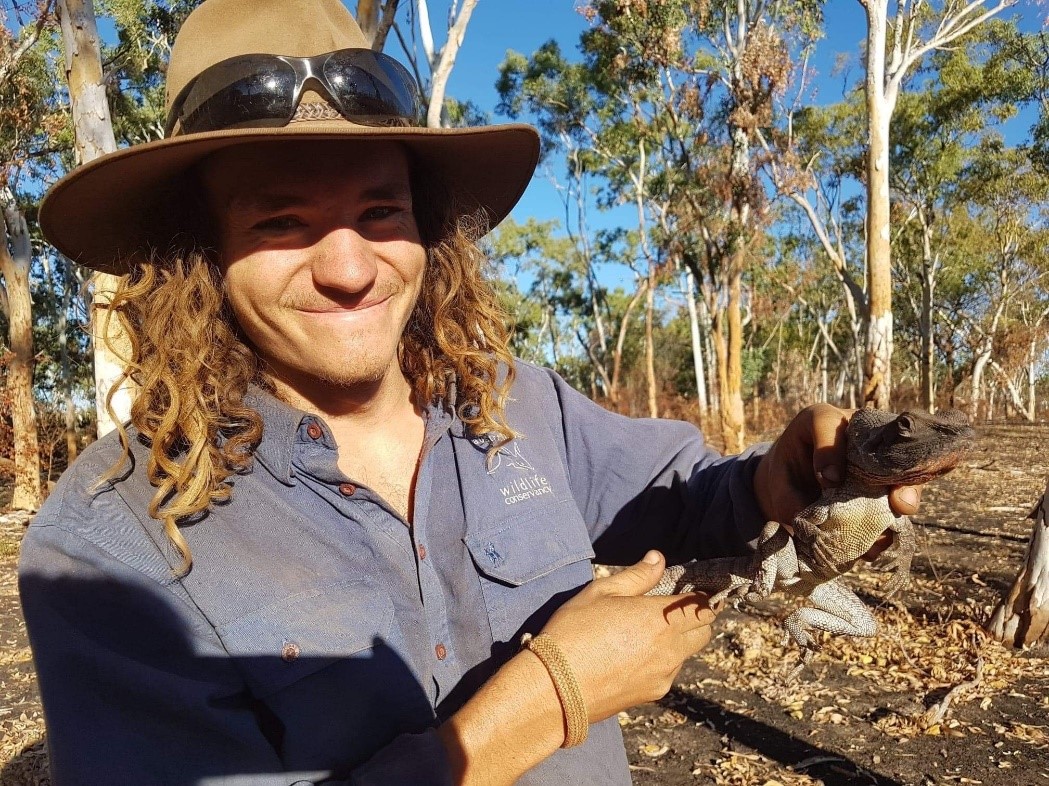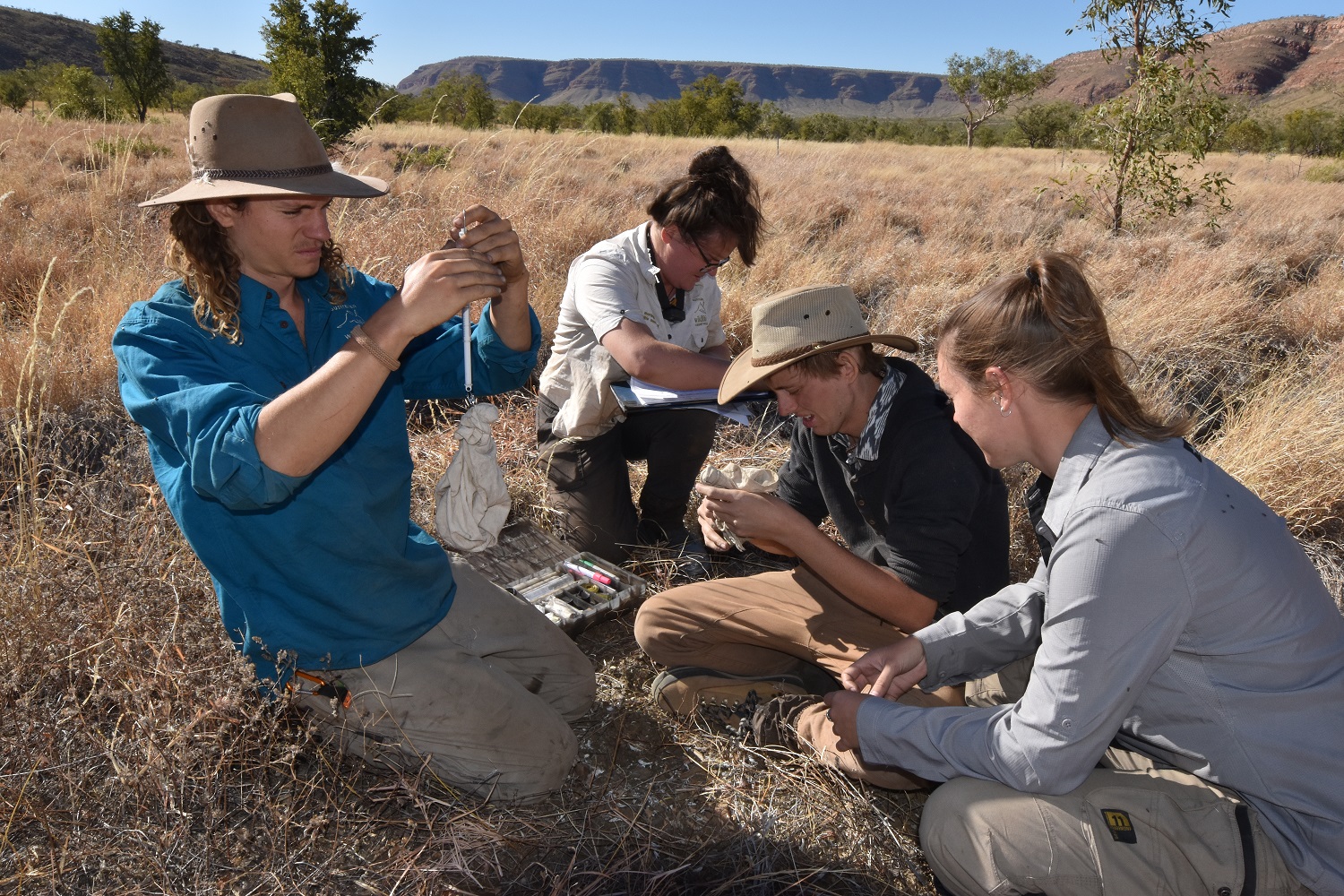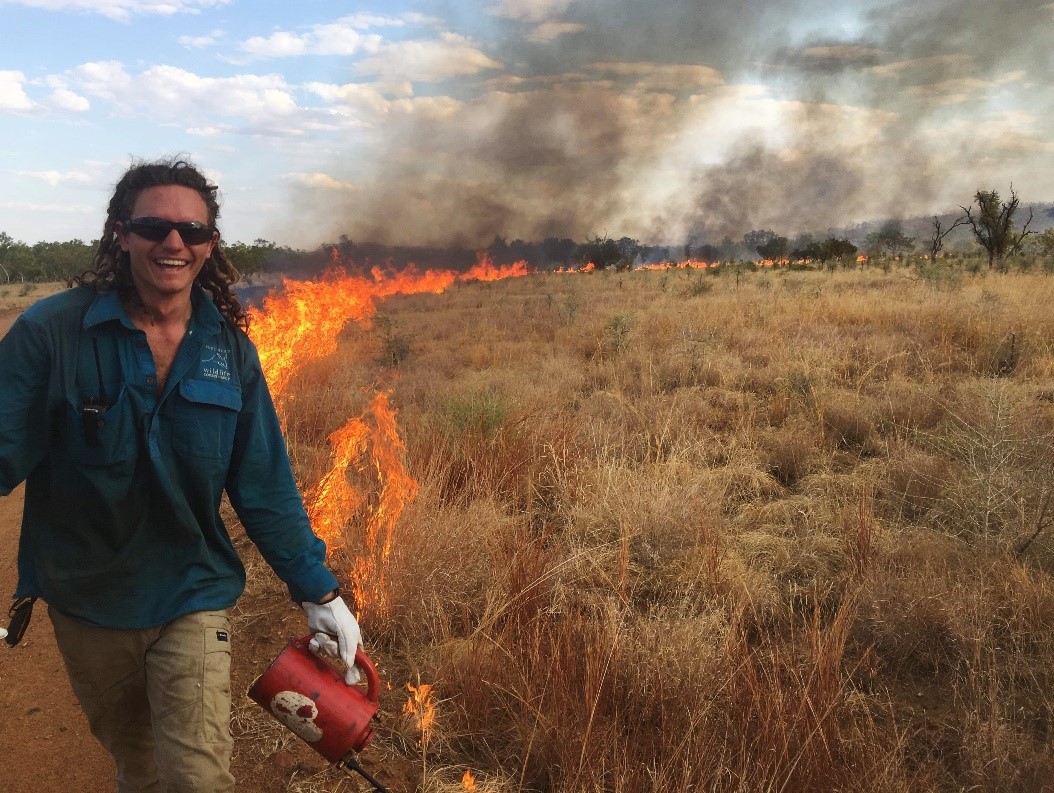AWC offers opportunities for promising graduate students to gain valuable conservation field experience via our Internship Program. Previous intern, Braden Riles, shares his experiences below.
Tell us a little bit about yourself…
My name is Braden, I’m 24 years old and originally from regional NSW. For as long as I can remember, I’ve had a keen interest in Australia’s critters and spent much of my time enthused by the bush yet disgruntled by the way it seemed to be treated.
I ended up studying Conservation Biology at the University of Wollongong, where I also undertook honours, studying the effects of wildfire on reptile assemblages in northern inland NSW. My interest in AWC was sparked not long after graduating, following a small stint in consultancy where I quickly learnt the type of effective ecology and conservation work I wanted to do.
 © Ruby Albury/AWC
© Ruby Albury/AWC
What were the details of your internship with AWC?
Over the course of 6 months my internship took me from Newhaven, in the central desert country, all the way to the Kimberley, in Australia’s northwest. After a month of live-trapping in the desert at Newhaven, myself and two other interns flew up to the Kimberley, and were based at Mornington Wildlife Sanctuary for the following 5 months.
I experienced a significant portion of the Kimberley during that time, being involved in science programs across AWC’s Kimberley management and partnership areas. These included Mornington, Marion Downs, Tableland, Charnley River-Artesian Range and Yampi Sound Training Area.
Being so varied in location and survey method, I was able to experience a variety of the Kimberley’s iconic wildlife either targeted research or long-term monitoring projects. This included live trapping species such as Northern Quolls, Bandicoots and Golden-backed Tree Rats, spotlighting Giant Cave geckoes, road-cruising Black-Headed Pythons and watching Star and Gouldian Finches drink from the edge of a Billabong.
In between, I spent time exploring gorges, hiking and rafting some of the rivers.
 © Joe Porter/AWC
© Joe Porter/AWC
What was the highlight of your internship?
I can guarantee that something unique popped up every day over those 6 months, making it hard to single out highlights!
I do, however, have a strong memory from a week of trapping in the Phillips Range. The Range is a pretty special part of the Central Kimberley landscape, preserving a melting pot of species, including some iconic Kimberley endemics. (It is not, however, “pristine”, with the effects of bad fire and feral herbivores often infiltrating some parts.)
We flew into a valley and slung all our trapping supplies underneath the chopper. Once the chopper left, we spent the ensuing days on foot. We moved between trapping sites in the early mornings and afternoons, catching Bandicoots and a diversity of skinks, and cooled off in the pool of a rainforest spring during the heat of the day. At night, we spot lit the creeks for frogs and watched Savannah Gliders amongst the giant Paperbarks. With the chopper handy upon our collection, a couple of feral herbivores were also removed from the valley. We couldn’t help but picture the valley, decades into the future, with the removal of ferals and a well-managed fire regime.
Were there any challenges?
The greatest challenge for me was starting the internship. To move to the remote Central Kimberley, I had to leave some significant aspects of my life behind.
A common challenge you hear is the remote living itself, but once I found myself amongst it all, the remote living became one of my favourite aspects of the internship.
What did you learn?
Through all aspects of the internship I was always learning (and still am).
Over the course of the internship, I found my species ID skills enhancing all the time, I became more confident leading survey teams, I came to learn and understand some aspects of another culture and had an evolving understanding of complex ecological processes (such as ecological responses to fire management).
It’s hard to quantify how much I learnt. The short answer is, quite a bit.
 © Rohan Wilson/AWC
© Rohan Wilson/AWC
How has the experience influenced your future?
Upon completing the internship, I was appointed as a Fire and Field Ecologist with AWC and I’ve not yet left the Kimberley. In fact, I hope not to anytime soon! My role has already taken me to some incredible parts of the Kimberley, and has allowed me to work and learn from a diverse group of people.
Essentially, the internship experience has put me where I want to be!
Any tips for applicants and/or future interns?
Get amongst it! The bush is your mate. The more time you spend as a part of its ecology, the more you’ll learn, giving you a greater chance at effective conservation.
Interested in becoming an AWC Intern?